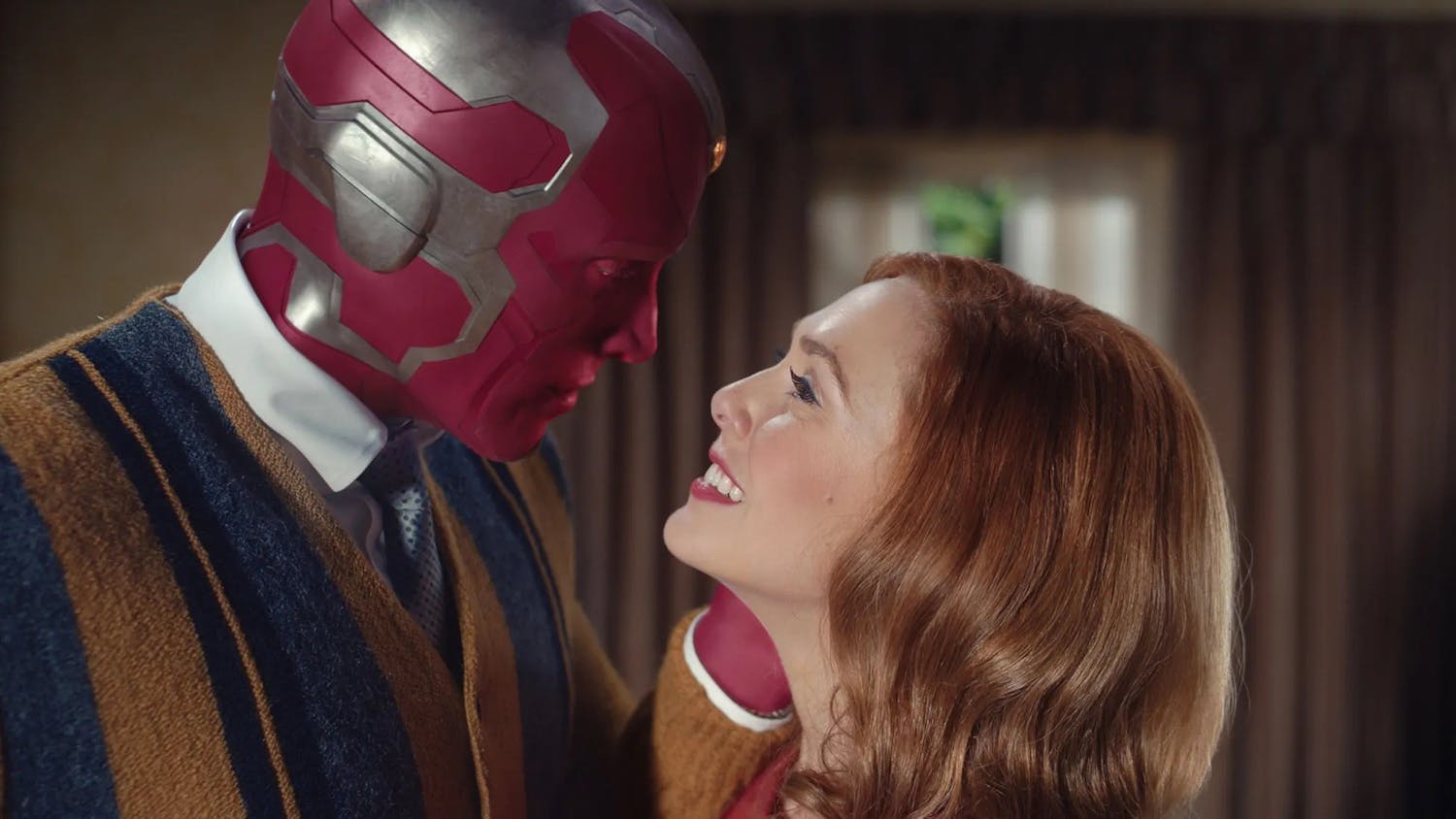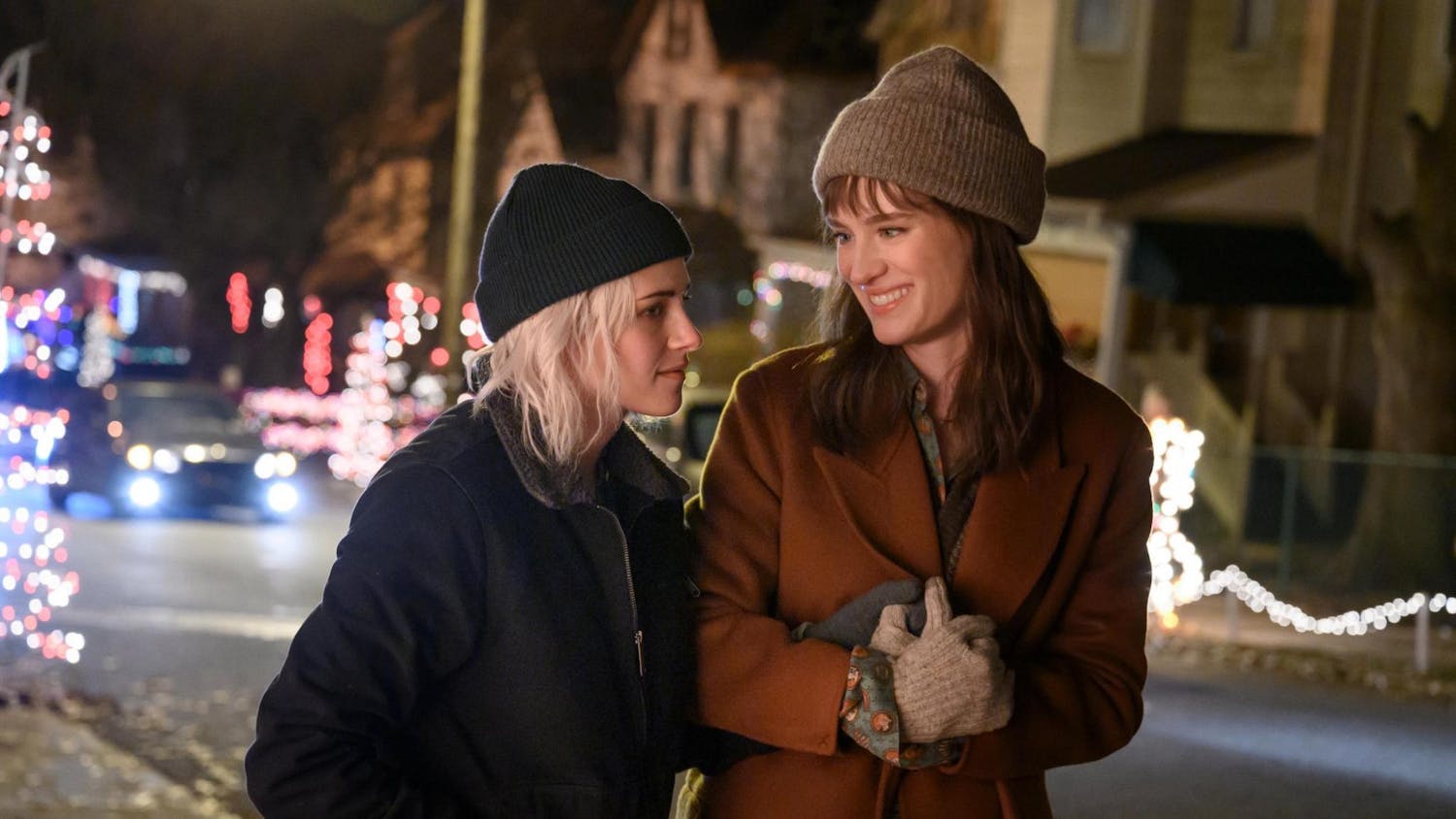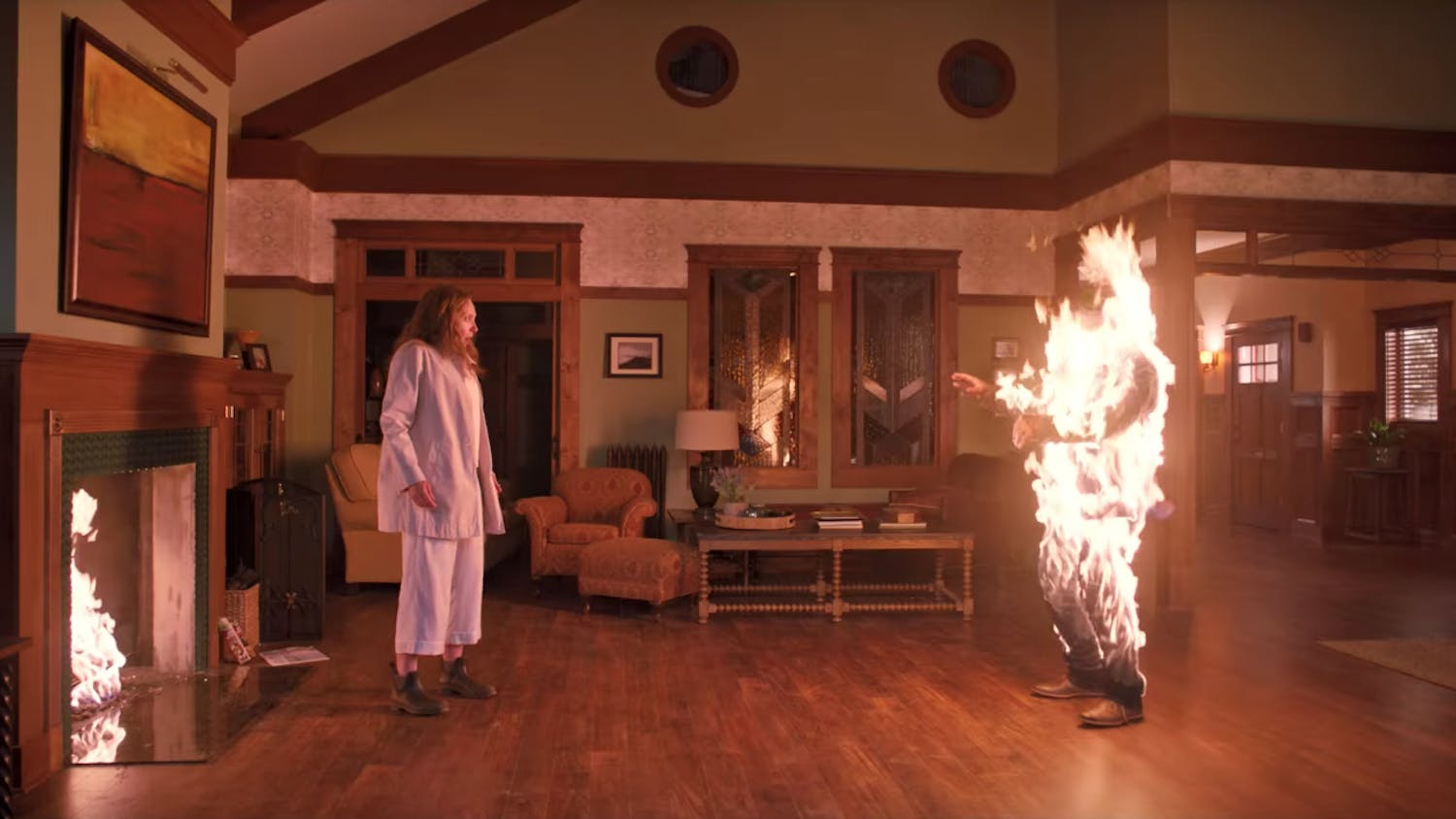After much deliberation, here are the top candidates in considering five of the most influential directors and films of American cinema from the last decade, as chosen by our Arts staffers.
""The 40 Year Old Virgin""/ ""Knocked Up""
Are we copping out by just lumping all of Judd Apatow's projects together for this list? Probably, but we needed a compromise to avoid a Cardinal office blood feud. Besides, who wants to pick a favorite between ""The 40 Year Old Virgin,"" ""Knocked Up"" and the stream of comedies that have followed in the wake of Apatow's new wave of raunchy, R-rated affairs.
Apatow has had a hand in what sometimes seemed like every worthwhile comedy in the last decade. While he's only actually directed three (the two mentioned above and this year's ""Funny People""), even films he's produced like ""Anchorman,"" ""Superbad,"" ""Forgetting Sarah Marshall"" and ""Pineapple Express"" share cast members, an underlying sense of humor (read: dick and pot jokes) and quotability off the charts.
When Apatow writes and directs, the dick-joke-cracking characters gain a heartwarming, mushy emotional center that makes their struggles in a sometimes mean, stupid world that much more moving and hilarious. Characters like Steve Carell's Andy Stizler or Seth Rogen's Matt Stone are both funny in their own right, but resonate as very human characters with very real problems to be faced. These problems are often faced with dick and fart jokes, but Apatow's style dovetails the profane and sacred, the crude with the real. The result are comedies that invite us to both identify and be revolted by the entire cast.
—Mark Riechers
""Bowling for Columbine""
Whether you consider Michael Moore a progressive crusader or left-wing demagogue, most people can agree on one thing: the man is a media whore. Although ""Bowling for Columbine"" wasn't Moore's first box-office behemoth—coming 13 years after ""Roger and Me""—the 2002 post-Columbine documentary on gun control transformed a genre and helped shape new standards for political debate now commonplace on cable TV's polemic punditry.
As with all of Moore's films, ""Columbine"" bombarded audiences with a combination of hilarious (or snarky) debate, compassionate (or hyperbolized) anecdotes, and hard-hitting (or sensationalized) interviews. Its fascinating topic—why Americans are obsessed with guns and killing with them—certainly triggered public debate. Whether those debates were more Tocquevillean or Machievillian, its impact—$21 million at the box office and an Academy Award for Best Documentary—is indisputable.
The film took risks, from the constructive when confronting Kmart with two students injured at Columbine and convincing the corporate reps to phase out their handgun ammunition, to the tastelessly passive aggressive while chasing down Charleton Heston post-interview to guilt trip him with photos of gun-shot victims. Moore only ballooned from there, in terms of political pugnacity, as ""Fahrenheit 9/11,"" ""Sicko"" and ""Capitalism: A Love Story"" took on the Bush Administration, health-care, and the financial crisis respectively. The three garnered a slew of reactionaries films including ""Fahrenhype 9/11,"" ""Michael and Me"" and ""Manufacturing Dissent.""
Moore is the father of Olbermann and the yin of Glenn Beck's yang. He sold liberalism like Billy Mays sold cutlery and audiences bought it in droves ... and then started stabbing opponents to death with it. What could be more influential in the 2000s?
—Ryan Hebel
""Lord of the Rings""
The world has not been kind to the fantasy genre. Long ghettoized to the realm of high school nerds who trifle away their leisure time playing Magic the Gathering, fantasy films have always had trouble being taken seriously so long as they sent forth their requisite legions of sorcery, dragons and pointy-eared elves. But that entire stigma fell almost overnight with the theatrical release of ""The Lord of the Rings: The Fellowship of the Ring,"" and was only solidified by the arrival of the two following chapters of the J.R.R. Tolkien's ""Lord of the Rings"" trilogy, ""The Two Towers"" and ""The Return of the King.""
It may have helped that ""Fellowship"" was released a mere month after the similarly successful release of ""Harry Potter and the Sorcerer's Stone,"" which itself could be credited with jumpstarting the resurgence of the fantasy genre. But it was ""Lord of the Rings"" that brought the genre credibility in the form of critical praise, Oscar nominations and its incredible epic scope. It is hard to imagine a film like ""Pan's Labyrinth"" even getting greenlit, let alone enjoying the commercial and critical success it garnered, without the success the ""Lord of the Rings"" trilogy received. Now the evolution can even come full circle, with ""Pan's Labyrinth"" writer-director Guillermo del Toro scheduled to direct the next Tolkien adaptation, ""The Hobbit"" for release in 2011. Expect the following Oscar telecast to be as full of dwarves and ents as they were early in this decade.
—Todd Stevens
""Mullholland Dr.""
Is ""Mulholland Dr."" a sugarcoated fever dream or a leisurely stroll down a shadowy alleyway? The film presents the viewer with one cinematic riddle after another, only to clam up and cop out unapologetically when the moment finally arrives to reveal what's lurking behind the curtain.
""Mulholland Dr."" is both an inkblot that arouses associations and a machine that conjures moods. Its postmodern credentials are practically unquestionable: the film is a pastiche of traits gleaned from film noirs, gangster movies and backstage musicals. The film's director, David Lynch, would do away with such big-budget glossiness in his next feature, 2006's equally enigmatic ""INLAND EMPIRE,"" exchanging it for an even more unsettling mixture of slush and murk. Naomi Watts's performance as a small-town schizo phrenic (or is she?) who becomes entangled in an incomprehensible web of murder, glamour, jealousy and secrecy proved to be star-making. Angelo Badalamenti's singular score is a sonic magnet, and Lynch's selection of several ‘50s pop hits to accompany it on the soundtrack renders the film's pull that much more irresistible.
But here's the thing: though one could easily write an entire book on the ins and outs and twists and turns of the film's labyrinthine mystery, it's also worth considering what exactly ""Mulholland Dr."" meant to this generation of filmgoers. Many viewers caught a terminal case of cinephilia as a direct result of watching and interpreting this 147-minute jigsaw puzzle. A work of art's greatness, some say, lies in its capacity to make the spectator think creatively; how many recent film school enrollees and graduates had artistic epiphanies while searching for the film's missing piece, while trying to come to grips with the film's sparkle and gloom, its paradoxes and gags, its moments of sense and nonsense?
What were the most influential films of the decade? I have no idea. But many, many of our future Lynchs reached creative puberty because of their engagements with ""Mulholland Dr.""
—Dan Sullivan
""WALL-E""
Pixar's influence on the view of the animated film is unquestioned. With stunning regularity, the animation studio provided hit after hit for Disney, who all but abandoned their traditional hand-drawn films in favor of the computer-animated masterpieces. But it wasn't until 2008's ""WALL-E"" that the animation conversation shifted from how to fill the Academy Awards nominations for Best Animated Film to expanding the Best Picture category to allow for animated films of a superior quality.
""WALL-E"" was an animated film, a love story, a sci-fi masterpiece and an allegory for our wasteful, obese, technology-dependent generation. With little more than a few chirps and beeps, the film painted an elaborate visual tale for audiences, all while retaining the classic boy-meets-girl simplicity of Disney films past.
Director Andrew Stanton is able to make a hunk of metal seem adorable, the human race seem naïve and pollution seem like the most pressing issue facing us today. Al Gore can make a million power points, but nothing resonates like the skyscrapers of garbage in the opening scenes of ""WALL-E,"" a very real concern given the current existence of ""garbage islands"" in the Pacific. And through it all, children will laugh at the robot slapstick, appreciating Pixar-created characters, as always.
""Ratatouille"" hinted at Pixar's higher aspirations, and ""The Incredibles"" combined domestic drama and superheroes, but it wasn't until ""WALL-E"" that the full power of Pixar's storytelling ability was realized. Because when it comes to ""WALL-E,"" the results were anything but ordinar-E.
—Kevin Slane
Honorable Mentions
-
- ""Memento""
- ""The Bourne Supremacy""
- ""28 Days Later""
- ""Four Months, Three Weeks, Two Days""
- ""Y Tu Mamá También""
- ""Amélie""
- ""The Royal Tennenbaums""





